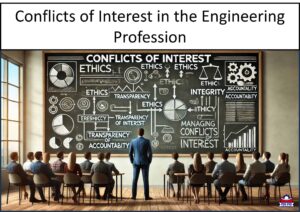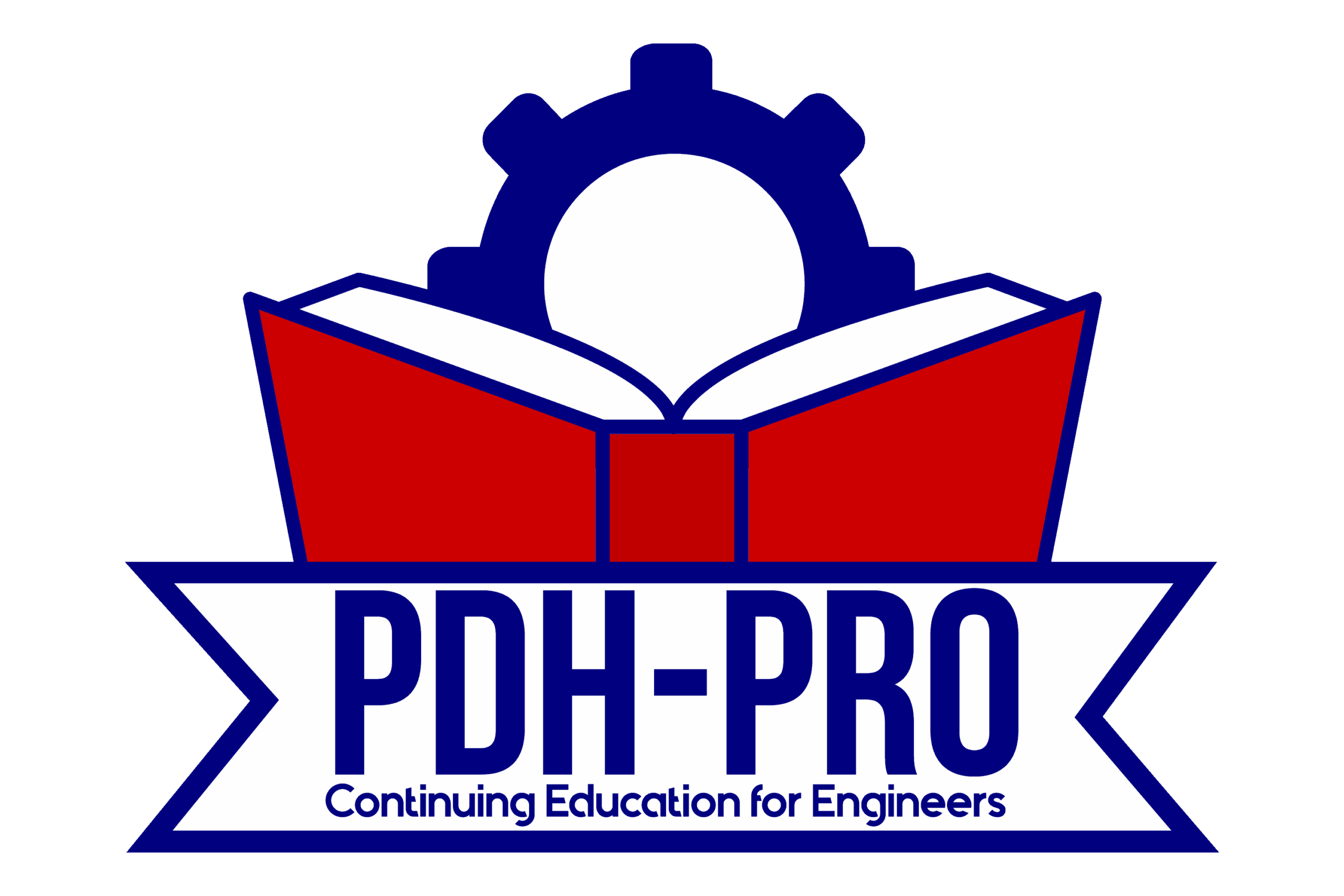The Essential Guide to Conflicts of Interest in the Engineering Profession
Engineers occupy a vital position in society—entrusted with designing the structures, systems, and technologies that sustain modern life. From bridges and buildings to water systems and power grids, their decisions directly impact public safety, health, and welfare.
With this responsibility comes a duty to uphold the highest standards of ethics and integrity. Among the most significant ethical challenges engineers face is managing conflicts of interest—situations where personal, financial, or organizational interests may compromise—or appear to compromise—their professional judgment.
What Is a Conflict of Interest?
A conflict of interest occurs when an individual’s personal interests—financial, relational, or otherwise—could interfere with their ability to act impartially in their professional role. For engineers, this can compromise not only the integrity of their work but also public trust in the profession. Conflicts of interest undermine objectivity and can arise when personal gain or outside relationships influence—or appear to influence—engineering decisions.
In professional engineering practice, these situations can take many forms. Below are several common types of conflicts of interest that engineers may face:
-
Financial Interests: An engineer may have a financial stake—such as stock ownership or a business investment—in a company they are designing for or evaluating. Even if their decisions are technically sound, the presence of a financial interest can raise concerns about bias.
-
Personal Relationships: Personal relationships with clients, vendors, or regulators can cloud professional judgment. For example, providing engineering services for a family member’s business may create pressure to overlook regulatory compliance or performance standards.
-
Dual Representation: Conflicts can arise when an engineer is expected to represent multiple parties with competing interests. This is common in regulatory contexts, such as when engineers are engaged by a private client but must also ensure compliance with public safety standards enforced by regulatory agencies.
-
Contractual Obligations: Engineers sometimes sign agreements that require confidentiality or loyalty to a specific client. If these obligations prevent them from sharing safety-related concerns or presenting unbiased recommendations, a conflict exists between legal duties and ethical responsibilities.
-
Previous Employment: Engineers who have recently worked for a project stakeholder may carry forward privileged knowledge or loyalties. This past association could affect their impartiality, especially in projects involving competing companies or contentious decision-making.
Identifying Conflicts of Interest
Recognizing a conflict of interest is not always straightforward. These situations often arise from subtle personal relationships, financial ties, or overlapping professional roles that may not immediately appear problematic. However, failure to identify and disclose such conflicts can undermine public trust, damage professional reputations, and lead to disciplinary action or legal consequences.
Professional engineers must remain alert to any circumstance that could compromise—or appear to compromise—their objectivity. This includes scrutinizing financial interests, familial or social relationships, previous employment, and any dual roles that could bias decision-making. Transparency is critical: when in doubt, disclose. Open communication with clients, employers, or colleagues allows for early intervention and can prevent ethical lapses before they occur.
Some guiding questions engineers should ask themselves include:
- Could this relationship or financial interest influence my professional judgment?
- Would others perceive this situation as a potential conflict?
- Have I informed all relevant parties about the relationship or interest?
Proactively identifying conflicts is not a sign of weakness—it’s a hallmark of ethical leadership and professional integrity.
What to Do About Conflicts of Interest
Identifying a conflict of interest is only the first step—resolving it is essential to maintaining professional credibility and upholding the public’s trust. Engineers have an ethical obligation to act in the best interests of their clients, employers, and the public. When a conflict arises, they must take proactive steps to mitigate or eliminate it. Three common and effective approaches include disclosure, recusal, and implementing safeguards.
1 – Disclosure
The most fundamental and often appropriate first response is disclosure. This means openly communicating the nature of the conflict to all affected parties—such as clients, employers, regulatory agencies, or professional peers. Full disclosure allows stakeholders to assess the potential impact and determine how to proceed.
Engineers should disclose:
- The nature and scope of the conflicting interest.
- The parties involved (e.g., business partners, family members).
- Any potential influence on their professional judgment or actions.
Example: If an engineer is asked to inspect a facility owned by a company in which they hold stock, they should disclose this investment to their client or employer before proceeding.
2 – Recusal
When transparency alone is not enough to resolve the conflict, recusal may be necessary. This involves voluntarily withdrawing from the specific project, task, or decision-making process to preserve impartiality and protect the integrity of the outcome.
Recusal is particularly important when:
- The conflict is substantial and ongoing.
- Stakeholders cannot reasonably mitigate the risk.
- Public safety or regulatory compliance may be impacted.
Example: An engineer serving on a municipal review board may need to recuse themselves from voting on a development project designed by their employer or former client.
3 – Developing Safeguards
In some cases, conflicts of interest can be managed through procedural safeguards—such as third-party oversight, peer review, or reassignment of duties. These measures help isolate the conflict and maintain the integrity of professional decisions.
Example: An engineering firm with ties to a contractor on a public project might assign oversight responsibilities to an independent reviewer.
Developing Safeguards
Preventing conflicts of interest is just as important as resolving them. Engineering organizations—and individual professionals—should implement proactive safeguards that minimize the likelihood of conflicts arising in the first place. These safeguards not only protect ethical integrity but also foster transparency, accountability, and public trust.
Effective safeguards include:
-
Written Ethics Policies
Establish clear, written policies that define what constitutes a conflict of interest, outline reporting procedures, and describe disciplinary actions for noncompliance. Policies should be accessible and regularly reviewed. -
Disclosure Protocols
Create standardized processes for disclosing potential conflicts early in project planning. This ensures that issues are flagged before they influence decisions or outcomes. -
Independent Review Processes
When feasible, involve neutral third parties to review decisions that may be affected by a conflict. Independent oversight reduces bias and reinforces objectivity. -
Training and Continuing Education
Provide regular training to help engineers recognize ethical risks and understand how to manage them. Scenarios-based training, particularly for new hires or team leads, reinforces awareness and preparedness. -
Documentation and Audit Trails
Maintain written records of disclosures, recusal decisions, and review outcomes. This helps demonstrate good-faith efforts to uphold ethical standards if a concern is raised later.
By embedding these safeguards into organizational culture and daily workflows, engineering firms can build resilience against ethical breaches and reinforce a culture of professionalism.
How to Mitigate Conflicts
The best way to mitigate conflicts of interest is to be proactive in identifying and addressing them. Engineers should be vigilant in recognizing potential conflicts and should be transparent about any relationships or financial arrangements that could influence their professional judgment. They should also be prepared to step away from a situation or decision-making process if necessary and should be familiar with policies and procedures that address conflicts of interest.
Best practices that can help mitigate conflicts of interest include:
- Clear policies and procedures: Developing and implementing clear policies and procedures for identifying, reporting, and mitigating conflicts of interest can help ensure that ethical decisions are made in the best interest of the public.
- Regular training and education: Providing regular training and education on ethical principles, including the importance of avoiding conflicts of interest, can help engineers understand their obligations and make better decisions.
- Independent review and oversight: Allowing for independent review and oversight of engineering practices, such as through third-party audits, can help identify conflicts of interest and ensure that they are properly addressed.
- Separation of duties: Ensuring that different aspects of a project are handled by different individuals or groups can reduce the risk of conflicts of interest and promote transparency and accountability.
- Adequate resources: Providing adequate resources, including staff, funding, and technology, can help ensure that engineering practices are conducted in an ethical and professional manner and that conflicts of interest are effectively managed.
Final Take
Conflicts of interest pose a serious risk to the ethical foundation of the engineering profession. When left unaddressed, they can erode public trust, jeopardize project outcomes, and undermine the credibility of individual engineers. But with vigilance, transparency, and a commitment to ethical excellence, these risks can be effectively managed.
Engineers must remain alert to the possibility of conflicts in every stage of their professional practice—whether arising from financial interests, personal relationships, or competing obligations. The key is not only to identify and disclose these situations but to actively implement strategies—such as recusal, oversight, and institutional safeguards—that ensure objectivity and fairness.
By leading with integrity, engineers uphold their duty to protect the health, safety, and welfare of the public. Ethical awareness isn’t just a regulatory requirement—it’s a cornerstone of responsible engineering and a mark of true professionalism.
